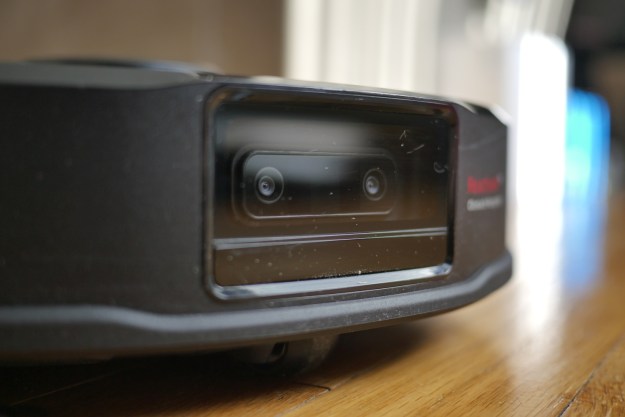Vacuum cleaning robots are dandy, but how much would you pay for a robot that does even dirtier work — cleaning toilets? Altan Robotech is betting that people will shell out $500 for its Giddel Toilet Cleaning Robot, which goes on sale on Wednesday, December 5, on Amazon and New Egg.
Billed by Altan as the world’s first portable toilet cleaning robot, the battery-powered white-and-blue plastic Giddel perches on top of the bowl (after raising all lids). It sports a telescopic arm equipped with a brush and advanced sensors and “115 sophisticated, heavy-duty mechanisms” that allow it to adjust to any size toilet. The company says the heavy-duty plastic housing is durable, electrically safe, and able to withstand the acidic environment in most toilets.

Altan offers two models, one for standard round toilets and the other for elongated models. During setup, Giddel’s software measures the bowl’s curvature and provides the arm with 3D coordinates for reaching all surfaces that need cleaning. The software can also detect and navigate around obstacles, a safety feature that the company says makes Giddel suitable even for households with small children.
Giddel works with any standard toilet bowl cleaning liquid, and its cleaning cycle addresses the rim, the area below the rim, and the bowl, right down to the exit drain. The housing sits in a mounting bracket, so it doesn’t contact the bowl or the water, and the Giddel’s brush doesn’t spin, in order to avoid splashes.
Giddel is cordless: When not in use, it sits in a charging station. To use it, you simply put it into the mounting bracket and hit the start button. Altan says it takes the Giddel five minutes to make your toilet sparkling clean, after which you can pick it up and move it to another toilet.
“With Giddel in a family’s home, people no longer have to do the mundane and disgusting task of cleaning a toilet bowl. Instead, they can focus on spending time with loved ones,” Alfred D’Souza, president and CEO of Altan Robotech, said in a release.
However you spend the saved time, most people could probably name something they’d rather do than clean toilets. Naturally, that’s why we wrote about the Loogun electronic toilet cleaning brush a couple of years ago, but it doesn’t seem to have gained much traction. We also have covered the IllumiBowl anti-germ toilet light, which promises germ-killing illumination.
Editors' Recommendations
- Beatbot makes a splash at CES 2024 with all-in-one robotic pool cleaner
- Forget developers, Steve Ballmer’s new passion is toilets
- Lidar is the gold standard of robot vacuum navigation, but it’s not perfect
- ISS astronauts take delivery of a shiny new space toilet
- Meet the engineer who let a robot barber shave him with a straight razor


